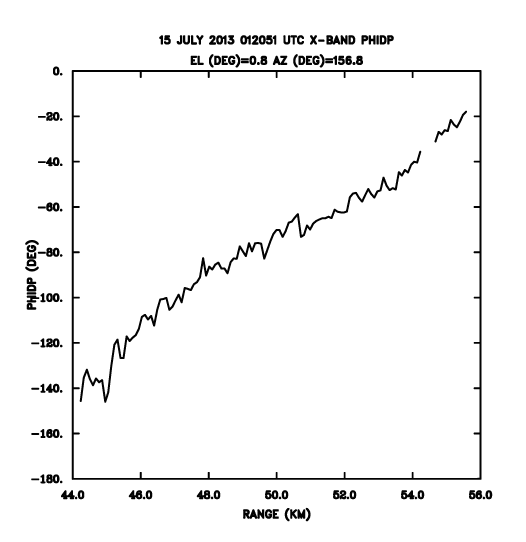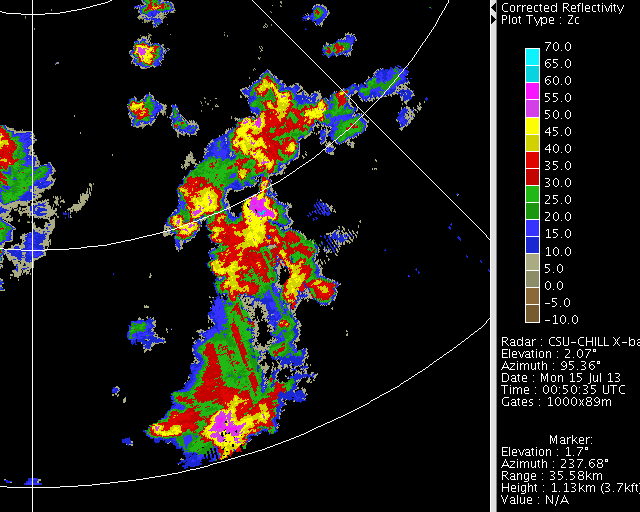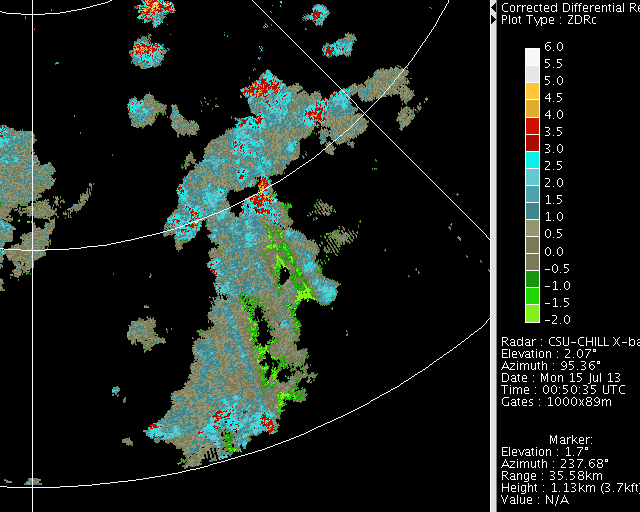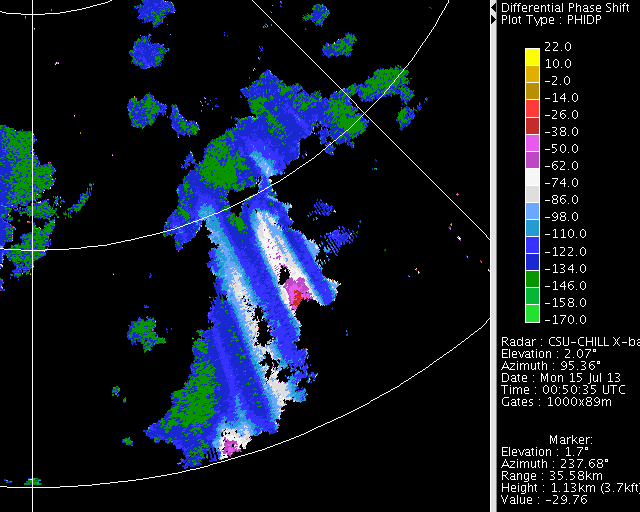Attenuation observed at 9 GHz (X-band): 15 July 2013
Introduction
Both scattering and absorption take place when microwaves interact with atmospheric particles (i.e., gas molecules, small cloud droplets, large raindrops, etc.) These scattering and absorption processes remove some of the energy from the passing radar pulses. Echoes will disappear from the radar's view when the propagation losses along the round trip path to the target become sufficiently large. These net attenuation effects can usually be neglected at 3 GHz (S-band). At 9 GHz (X-band), the high concentrations of large raindrops that occur in heavy rain areas cause significant signal losses. While a series of low elevation angle (0.8 deg) PPI scans were being conducted with the CSU-CHILL X-band system on 15 July 2013, an episode of signal extinction due to heavy rain was observed.
Attenuation corrected reflectivity loop
The following loop shows a series of X-Band reflectivity images at just over 3 minute time intervals. A basic correction for attenuation losses has been applied to the values. When the attenuation losses become large enough, the more distant echo area disappear as lost signal shadows develop down range of the high reflectivity precipitation cores. One such signal loss area is quite well defined at 0120 UTC.
|
|
||
|
Attenuation corrected differential reflectivity loop
When non-spherical hydrometeors are present, the attenuation losses at horizontal and vertical polarization become different. The attenuation losses at horizontal polarization exceed those at vertical polarization when oblate rain drops are present. This differential attenuation loss induces a negative bias in the differential reflectivity (Zdr) data. The following loop shows the Zdr data with a differential attenuation correction applied. Some areas of negative Zdr still exist near the "shadow" regions.
|
|
||
|
Differential propagation phase loop
The same high concentrations of oblate drops that cause significant attenuation also cause the phase of the received horizontally-polarized waves to become retarded with respect to that of the vertically polarized waves. Beam path segments where the H - V phase difference (phidp) rapidly increases are indicative of intense rainfall rates. The following loop, tight range gradients of phidp occur at the near range apex of the attenuation shadows:
|
|
||
|
0120 UTC plots
The following plots show the conditions present when the attenuation loss was most pronounced.
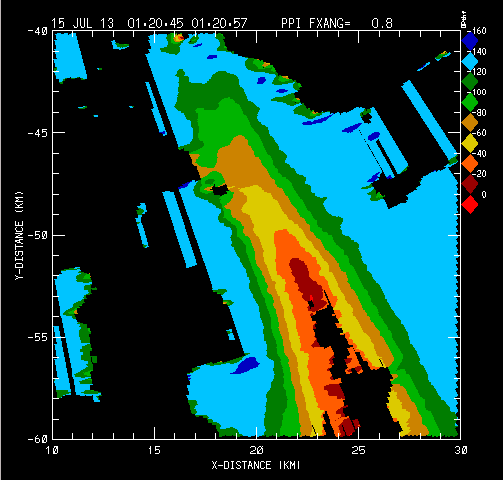
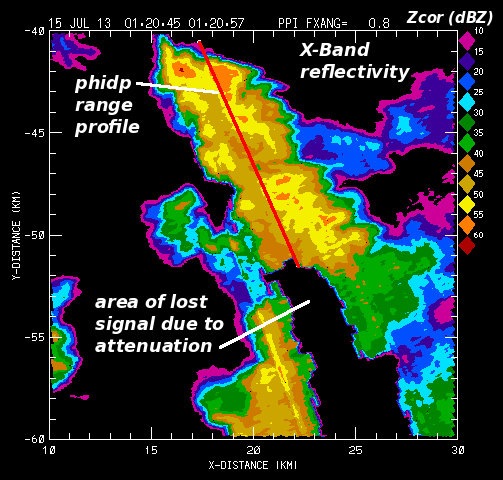
The final plot shows the raw differential propagation phase data along the beam segment marked in the preceding reflectivity plot. A phidp change of ~100 degrees accumulated along an ~40 km long beam segment. The attenuation loss due to this region of heavy rain causes the complete extinction of the X-Band signal.
